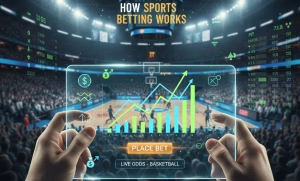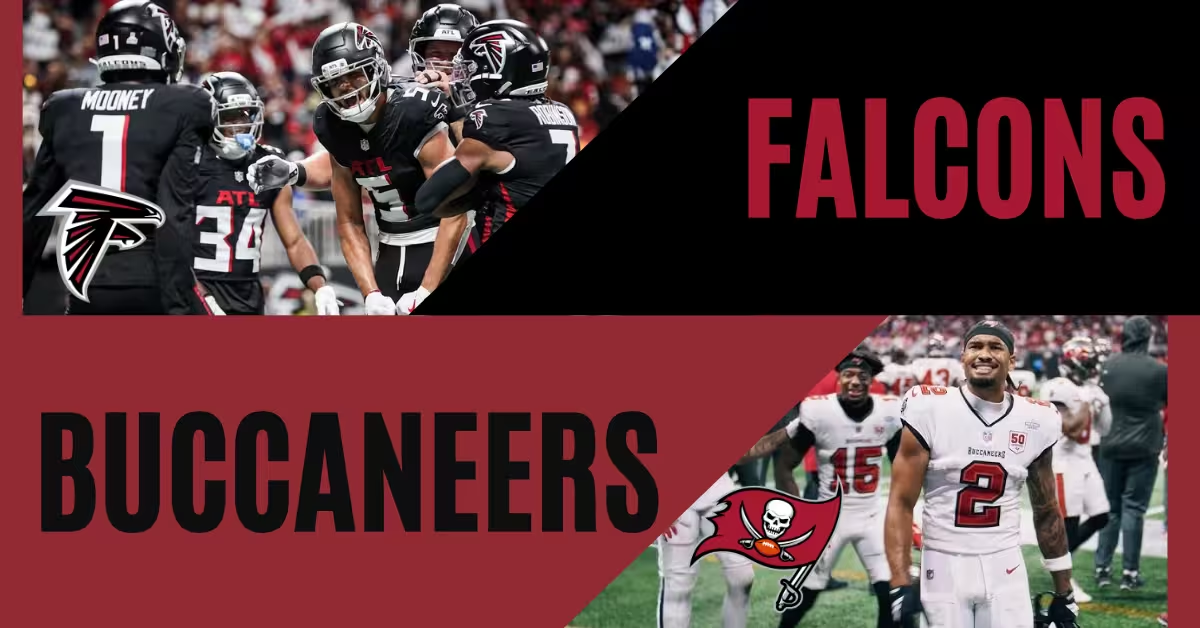How to Use Player Prop Trends to Outperform the Sportsbook

What if you could beat a sportsbook by seeing something they missed about a player’s performance? It’s doable! If you notice a relatively unknown wide receiver who is gaining more yards every week, but the betting line is staying low. You get in on the over, cash in, and watch the sportsbook struggle to catch up. Like we said, it’s doable. And it’s a regular reality for the bettors who know how to exploit player prop trends.
Player prop bets, which are wagers on individual player stats, have gotten a lot of traction in the last few years. And with popularity comes opportunity. Instead of the traditional bets on teams, player props present a “beatable game” for smart bettors. Sportsbooks have hundreds of prop lines but can’t perfectly price each one, especially as player roles and conditions are constantly changing.
This is where you come in. If you understand and track the trends in players’ performances, you can absolutely find value bets that beat the bookies.
Want to know how? Ask and ye shall receive! We’ll tell you how you can use prop trends to your advantage. You’ll have a clear, actionable game plan to get in on the prop betting gold rush while the getting’s good!
What Are Player Prop Bets, Exactly?
Before we get into trends and strategy, we need to make sure that we’re on the same page about what a player prop bet is. A player proposition bet is just a wager on an individual player’s performance in a game, rather than on the game’s outcome. Instead of betting on who will win or the total points scored, you’re betting on specific stats or achievements by a player. You could bet on a quarterback’s passing yards, a basketball player’s points scored, or a baseball pitcher’s strikeouts in a game. The bets come in the form of an over/under line set by the sportsbook.
Player props can cover almost any measurable statistic or event, such as the following:
- Accumulation stats: yards, points, rebounds, assists, goals, etc. (e.g., Jonathan Taylor over 85.5 rushing yards).
- Counts of specific plays: catches, three-pointers made, strikeouts, touchdowns (e.g., LeBron James over 2.5 three-pointers).
- Yes/No milestones: Will a player score a touchdown? Will a player hit a home run? (These are phrased as yes/no or listed with odds).
- Miscellaneous props: more niche things like longest reception by a player, or time of first goal by a hockey player, etc.
If it’s an aspect of an individual’s performance, it can be a prop bet. The appeal is obvious: props let you zero in on the players and storylines you know best. Maybe you’re a huge fan of a rising NBA star and have a good read on his nightly output. Prop betting lets you monetize that insight. It’s also a fun way to stay engaged with games! Even a blowout is exciting if your player is still hustling for that last rebound that you need to win.
Why Sportsbooks Struggle to Set Perfect Prop Lines
Sportsbooks are really good at setting lines for the big markets like game spreads and totals. Those lines are shaped by tons of money and data, but props are a whole different ball game. There are so many players and stats to account for that even the most sophisticated sportsbook models have some gaps. Below is why prop lines usually have soft spots that you can exploit!
Sheer Volume of Props
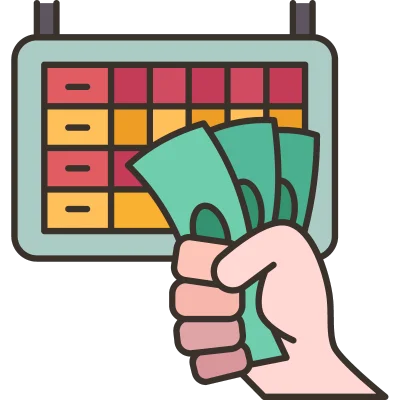
For a single NFL game, a book might offer dozens of different player props (passing yards, rushing yards, receiving yards for multiple players, etc.). For an NBA slate, multiply that by every player who might see the court. It’s impossible to research and calibrate every one of those lines perfectly. Oddsmakers have to rely on limited data and sometimes generic assumptions for lesser-known players or unusual stats. Fewer data points in these markets means that it’s easier for bettors to find an inefficiency or an edge.
Limited Data & Unpredictable Roles
A team’s star players have a deep history of stats, so setting their prop lines is straightforward (though still not foolproof). But what about a backup running back who rarely plays, suddenly put into a starting role due to another player’s injury? Sportsbooks have way less data on how he’ll perform. Will he handle 20 carries well or fizzle out? There’s a lot more guesswork involved, and because the books have fewer data points on that scenario, the lines are “not as concrete” as usual. The uncertainty can lead to lines that don’t fully account for a player’s true potential in an expanded role.
Timing and Information Gaps
Player news in sports is fast-moving. An important detail, like a star player being on a minutes restriction, a last-minute injury, or a change in the weather, can greatly affect a player’s expected stats. Sportsbooks do adjust lines for known news, but they can’t always do it instantly or perfectly. There’s usually a window of time where a prop line is stale (reflecting old assumptions) before it updates.
If a basketball coach hints in a morning interview that he’ll give a rookie more playing time, sportsbooks might not catch on immediately. Early bettors could exploit the rebounding or points prop for that rookie if it’s still set based on his old bench role.
Public Bias and Oddsmaker Priorities
Online sportsbooks know that the average bettor loves betting overs, especially on popular players. It’s more fun to bet on a star to score a ton of points or yards than to bet on an under. This bias influences how lines are set. Sometimes, books will set a number a tad higher or have extra juice on the cover, anticipating that public money will flow that way regardless.
This means that value can lie with unders or on less prominent players. Sportsbooks also traditionally put most of their energy into the big markets (spreads/totals) because that’s where the bulk of money comes in. Prop bets, historically, had lower betting limits and were almost an afterthought for bookmakers. The house is more willing to live with a slightly imprecise prop line.

Rapid Line Movement & Low Limits
Even when a sportsbook realizes that a prop line is off, they might adjust it by moving the odds or the line quickly and limit how much you can bet. If you’re quick, you might get the good number before it moves. Because limits on props are usually lower than, say, an NFL spread, a few smart bets from sharps can force a big adjustment. The end result is that prop lines can be more volatile. For a prepared bettor, that volatility is a chance to strike at the right moment.
All of these factors mean one thing: the sportsbook is not infallible on player props. They have more ground to cover and less certainty, which tilts some power back to the bettor who does their homework. This doesn’t mean beating props is easy money, but it does mean if you put in the effort to identify real trends and stay informed, you stand a much better chance of outsmarting the lines here than in the more efficient markets.
How to Identify Winning Prop Trends
Okay, so we know that props can be softer lines, but that alone won’t pay the bills. You need a method to consistently spot and act on player trends that the lines haven’t caught up to. Below is a step-by-step game plan to do just that!
It’s not hard to get intimidated by the sheer number of props that are available. Start by focusing on a handful of players or a particular type of prop where you might have an informational edge. Maybe you’re an NBA fan who follows the sixth-man players closely, or an NFL fantasy manager with intimate knowledge of running back rotations. Home in on a few players (or a team) where you can really dig into trends. By narrowing your focus, you can study nuanced patterns that casual bettors (and sportsbooks) may overlook.
Once you have your targets, collect their recent game logs and stats. Look at the last 5 to 10 games to get a sense of current form. Note the key stat relevant to the prop you care about (yards, points, assists, etc.), but also jot down contextual stats: snaps played, minutes played, shot attempts, targets, etc. This helps you differentiate whether a recent surge or slump is real. Ideally, you want to establish a baseline and trendline for the player’s performance.
Now, study that data for patterns. Is the player consistently exceeding the prop line that’s usually set for them? Are their numbers steadily increasing or decreasing over recent games? Look for inflection points where something changed. Perhaps a teammate got injured, and since then, your player’s stats have jumped. Or the player switched roles (like moving from bench to starter). Also, note if they’ve been on a hot or cold streak relative to the betting lines. The goal is to spot where reality (the player’s performance trend) might be out of sync with perception (what the sportsbook is basing the line on).
This is a really important analysis step! Ask why the trend is happening and whether it’s likely to continue. Context turns raw stats into actionable insight. The following are the questions you should be asking:
– Did the player’s role or usage change recently? (e.g., more minutes, more touches, different position in lineup)
– Has the player been facing particularly easy or tough opponents in those games? (A wide receiver piling up yards against a string of weak pass defenses might not fare as well against a top defense next).
– Are there injury or coaching factors? (New play-caller, different scheme, injuries to others forcing this player into focus).
– Any personal improvements or slumps? (Did the player tweak something in their game? Young players, especially, might improve as the season goes on.
Now comes the matchup: your analysis vs. the bookmaker’s expectation. Check what prop line is being offered next for this player (or what it was in the most recent game if you’re doing retrospective analysis). Is there a discrepancy between the trend you see and the line? If your analysis shows the receiver has averaged ~60 yards in the past month with an upward trajectory, yet his next game’s line is still, say, 45.5 yards. That’s a flag: it suggests the line hasn’t caught up to his new role. You’re looking for spots where the player’s trend suggests a different “expected value” than the betting line. These are your potential bets. Sometimes the gap will be in the raw number (line too low or high), other times in the probability (maybe the line is about right but heavily juiced to one side due to public bias, giving value on the other side).
One of the biggest mistakes in prop betting is overreacting to a single game or two. A player might explode for a career-high one night (say a basketball player drops 40 points once), and that skews their recent average. Don’t assume that’s the “new normal.” Always gauge the median performance and how often the player hits a certain threshold, not just the average. If a player’s last five games’ points are 12, 13, 15, 40, 14, their average might be around 18, but that one 40-point outburst is an outlier. In fact, they only exceeded 15 points once in those five games. The median (15) is much lower and probably a better indicator of typical performance in that span. For this reason, sportsbooks often set lines closer to median outcomes than straight averages. In early season or small sample situations, medians and contextualizing outliers is critical. If an outlier was due to a one-time event (like a teammate being out, or an overtime game), make sure to account for that. Look for at least a handful of games reinforcing a pattern, or a clear narrative that explains the jump.
To bolster your analysis, check the player’s situational splits. This means how their performance varies under different conditions:
– Home vs Away.
– Vs certain types of opponents (e.g., a running back vs top-10 run defenses vs bottom-10).
– With or without certain teammates in the lineup (many stat sites let you see a player’s stats in games a teammate missed).
– By game script (does a running back do better in wins vs losses? Does a player score more when playing high-tempo teams?).
– By rest or schedule (some NBA players perform differently on back-to-back nights vs with rest).
The splits can confirm or qualify a trend. You might find that your receiver trend is strong except in road games, where his production dips. Or that a point guard’s assist spike only holds when facing slower-paced teams (just as a hypothetical). Always align the data sample with the circumstances of the upcoming game.
You’ve done your homework days or hours in advance—great! But sports will surprise you last-minute. Always keep an eye on any late-breaking news that could affect your bet. This includes:
– Injury reports and lineup confirmations: That trend you found for a running back might evaporate if his offensive line’s best blocker pops up on the injury list late. Or a basketball player you like might suddenly be listed as questionable.
– Weather reports for outdoor games: High winds, rain, or snow can drastically affect passing and kicking props in football, for instance. If you were eyeing a QB’s over based on a trend, and the day of the game there’s a blizzard forecast, you may want to re-evaluate (or feel extra confident if you were on the under).
– Coach quotes and local reporter insights: Sometimes a coach will hint at a game plan (“We need to get Player X more involved this week”), which can affirm your trend analysis. Beat reporters often tweet out tidbits about who took first-team reps in practice, etc.
– Line movements: If you see the prop line suddenly move against your lean (say you liked an over at 45.5 and it jumps to 49.5 before you bet), take note. That could indicate others were on the same trend (or unexpected news). You might need to reassess if there’s still value at the new number.
At this point, if your trend analysis and the surrounding info all point one way and the line hasn’t adjusted yet, it’s go time! Lock in that bet. The confidence here comes from all the homework, as you aren’t just betting a hunch; you have data and reasoning that the sportsbook’s number is off. If everything checks out, you place the bet. Conversely, knowing when not to bet is just as important. If your research is inconclusive or the line moved to exactly where you expected (erasing the edge), it’s okay to pass. You want to bet only when you have a clear advantage.
Tip Box: Look for Patterns, Not One-Hit Wonders
A single monster game doesn’t mean a trend. Look for players showing consistent performance over multiple games. That’s where the real edge is—not in chasing random outliers.
8 Best Sources to Track Player Prop Trends
Identifying trends sounds good in theory, but it also sounds like a lot of data to wrangle. But there are so many resources and tools to help you research player props and spot trends. In the old days, you might have had to gather box scores from multiple sites manually. Now, there are platforms that aggregate this info and even visualize it for you. Below are some of the best sources to take advantage of:
- Props.cash (Player Prop Research Tool): A dedicated prop betting research platform that’s become extremely popular for good reason. Props.cash provides charts and statistics on players’ performances relative to various props. You can quickly see how often a player has gone over a given points line in the last 10 games, or his yardage trend over the season. It offers filters for home/away, opponent, and other splits. If you’re serious about prop betting, a tool like this can save you hours and improve accuracy.
- BettingPros and Other Prop Trend Trackers: Websites like BettingPros offer free player prop trend dashboards for major sports (NFL, NBA, etc.). These usually show you how a player has performed against the sportsbook line historically. Some even break it down by situations like “last 5 games” or “vs division opponents.” While you should use these numbers as a starting point (and then analyze why those trends happened), they’re great for flagging potential bets.
- Official Stat Databases (Pro-Football-Reference, Basketball-Reference, etc.): The sports-reference family of sites (and others like ESPN’s stat pages or NBA.com’s stats) are goldmines of data. They have complete game logs, situational stats, and some advanced metrics. You can use these to double-check a trend or get more granular. The sites also allow you to find historical comparables (how did this player do last season when similar conditions happened?).
- Fantasy Sports and Projection Sites: Since prop betting is so closely tied to fantasy projections (both are trying to predict player stats), tapping into fantasy resources can give you an edge. Sites like Establish The Run, Rotowire, or FantasyLabs publish player projections for each game. By comparing a projection to the prop line, you might spot discrepancies (e.g., a projection system thinks a RB will get 70 yards, but his prop line is 55.5). If you trust the projection (and it matches with your own analysis), that could indicate a good over bet. Some platforms even highlight plusEV props based on their projections. Just be careful: not all fantasy projections account for betting context (like median vs mean issues), but they are a great supplementary data point.
- Daily Fantasy Optimizers & Tools (for advanced users): If you’re really into analysis, DFS optimizers and simulators (like those for DraftKings/FanDuel lineups) can indirectly help with props. They’ll show you expected outputs and usage rates, which you can translate to prop expectations. A DFS site might show that a backup point guard is a great cheap pick on a night the starter is out, implying he’s projected for strong stats. That’s a heads-up for you to check his prop lines. DFS players and prop bettors usually look at the same indicators of performance but monetize them differently.
- News and Social Media (Twitter/X, Reddit, Team Blogs): Staying on top of real-time news is super important for prop betting. A lot of trend exploitation comes from being aware of things before they hit the public in full force. Twitter (now X) is arguably the fastest source of sports news. Follow beat writers for teams, official team accounts (for lineups and inactives), and injury news accounts. There are also prop betting communities on Reddit (like r/sportsbook or r/dfs threads) and Discord groups where people share their insights. Just be discerning, as not every “trend” someone mentions is valid. But crowd-sourced info can point you to things you hadn’t noticed. Setting up alerts for certain keywords (player names, “minutes restriction”, “increased workload”, etc.) can be really helpful.
- Odds Comparison and Betting Tools: Websites like OddsJam, SportsInsights, or Action Network (which owns SportsInsights) provide odds comparison across books and sometimes flag mispriced lines. SportsInsights has a Prop Odds comparison tool and claims to highlight inefficiencies. By seeing multiple books’ lines, you can identify if one sportsbook is slow to adjust. And comparing odds (like one book might have over 22.5 at -110 and another at -130) can hint at which side is taking money.
- Historical Databases & Analytics Sites: Sites like Statmuse (which allows you to query stats in plain language) or even programming with sports data (if you’re inclined) allow you to dig up specific trend stats. You could use Statmuse or Python to find “games where Player Y played over 30 minutes and his points” to see what he typically does with increased minutes. This is the more DIY route, but it can unearth very specific situational stats that the generic sites don’t show.
Below is a quick breakdown of the best free and paid tools to make the research easier—and way faster!
| Category | Tool Name | What It’s Good For | Free or Paid |
|---|---|---|---|
Stats & Game Logs | Pro Football Reference / Basketball Reference | Full player game logs, situational splits | Free |
Injury Updates | Rotoworld (NBC Sports Edge) | Player news blurbs, injury updates | Free |
Basic Prop Trends | FantasyPros Prop Trends Tool | Hit rates on popular props | Free |
Breaking News | Team Beat Writers (Twitter/X) | Real-time lineup, role, and injury updates | Free |
Line Movement | DraftKings/FanDuel Opening Lines | Watching props move before game time | Free |
Trend Analysis | Props.cash | Visual prop trend charts, matchup data | Paid (Subscription) |
Projections | Establish The Run / FantasyLabs | Betting-focused player projections | Paid |
Odds Comparison | Action Labs (Action Network Pro) | Highlighting edges between projections and live prop lines | Paid |
DFS Crossover | RotoGrinders Premium | DFS projections that double as prop research | Paid |
The fastest way to catch injury updates, lineup news, and player role changes before the sportsbook adjusts is to set up some Google Alerts! Here’s how to get it done:
- Go to Google Alerts
- Type in key search terms like “LeBron James injury”, “NFL RB depth chart”, or “starting lineup Lakers”
- Under “Sources,” choose News only (filters out junk)
- Set frequency to As-it-happens or At most once a day, depending on urgency
- Select your preferred email address
- Click Create Alert and start monitoring
Smart Betting Strategy: When to Strike
Knowing what to bet is only half the battle. The other half? Knowing when to bet. In player props, timing can greatly impact your success. Because lines move and information unfolds, the value of a bet can wax and wane rapidly. Next, we break down some timing strategies for prop betting and how to maximize your edge!

Betting Early: Beating the Line Before It Moves
The earliest lines (when a sportsbook first posts a prop) are when they’re the most vulnerable. At this stage, the book might still be using rough estimates or hasn’t yet adjusted for a subtle trend you’ve identified. If you’ve done your homework and foresee that a line is too low/high, grabbing it early can lock in tremendous value. Why? Because once sharper bettors or high volume bets hit that line, the sportsbook will adjust it.
That being said, betting early comes with a caveat: you have less information at that point. In the NFL, a lot can change from Monday to Sunday (injuries in practice, weather forecasts, etc.). In the NBA, if you bet props in the morning, you could be blindsided by an afternoon report that a player is out for a game. So, bet early when you’re confident in your info or when the potential reward outweighs the risk of unknowns. Early betting is especially useful for:
- Obvious mispriced lines (where you’d bet it regardless of minor news).
- Situations where you actually expect news to break in your favor, like you strongly suspect that a “questionable” player will sit out, even though it’s not been confirmed. You might bet his backup’s props early before that news becomes official. If you’re right, you’ve essentially “beat the book” to the news, and the line will jump or be taken down once the sit is confirmed.
Betting Late: Capitalizing on Confirmed Info or Last-Minute Adjustments
But sometimes patience is a virtue. If you wait until closer to game time, you eliminate a lot of uncertainties. You know exactly who is in or out, you have the latest weather, and you can see how the market (other bettors) have moved the line. Betting late is usually the way to go when:
- You need to confirm something critical. If you want to bet an over on an NBA player, but only if you’re sure he’s actually playing (or playing full minutes). If he’s a game-time decision, you should wait until starting lineups are announced 30 minutes pre-tip.
- You’re looking to play an under and hoping public money (which tends to be on overs) has inflated the line. A lot of casual bettors put in their prop bets the day of the game, often on overs. If you’re leaning under, you might get an extra point or two by waiting until after the bulk of over money pushes it up. In the NFL, an RB’s rushing line might climb a few yards by Sunday morning due to optimistic bets, giving you a better number to go under.
- Last-minute news creates a short window of opportunity. Sometimes news breaks so close to game time that sportsbooks can’t adjust fast enough, or they briefly leave a stale line up. If 15 minutes before kickoff, you hear the weather is turning bad or a surprise scratch of a key player, the books will be in scramble mode, but there could be a few-minute window where an alert bettor can still grab a mispriced prop. One pro tip: in the NBA, when starting lineups are tweeted (usually ~30 minutes pre-game), pay attention to any unexpected names. If a bench guy is starting out of nowhere, check his props. There’s a chance the book hasn’t updated his line from bench-role expectations. Those minutes right after lineup news are when a lot of sharp NBA prop bettors strike.
Know the Betting Windows for Each Sport
Every sport has a different pace for when props are released and moved!
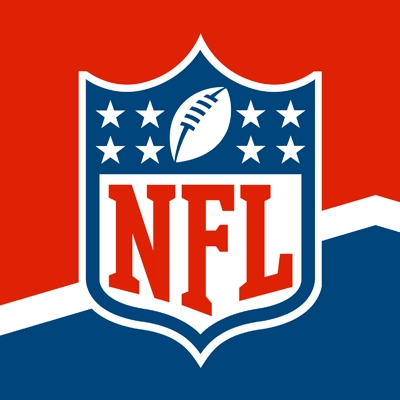
NFL: Most sportsbooks post the big-name player props mid-week (Tuesday or Wednesday for a Sunday game), but props for lesser-known players might not show up until a day or two before as they firm up rosters. The biggest moves usually happen in the 24 hours before kickoff when injury statuses are finalized. Sunday morning, when actives/inactives come out (90 minutes before the game), is a flurry of prop line adjustments. So for the NFL, early week bets can find value, but Sunday morning bets can exploit last-second changes.
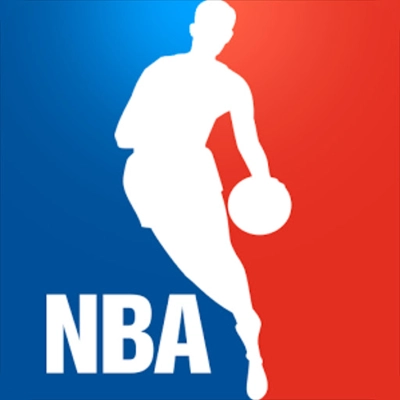
NBA: Props usually appear on game day (morning or early afternoon) for that night’s games. Player news (rest, injuries) in the NBA is constant, so lines can swing wildly throughout the day. If you bet in the morning, you might get ahead of a news-based move. But a lot of bettors wait until the afternoon injury reports or even after warm-ups. The final hour before tip-off is key—that’s when you know the lineups and who’s in/out for sure. It’s also when limits might increase, so bigger bets come in and move lines.
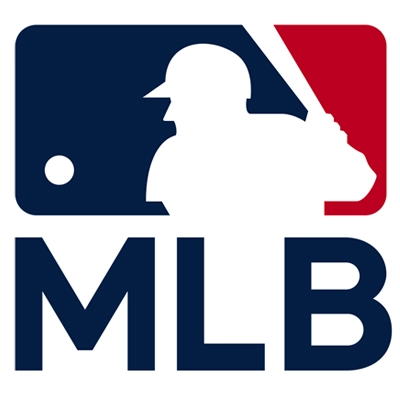
MLB: Baseball props (like pitcher strikeouts, hitter totals) are posted the day of the game once lineups are known. Weather (wind, especially) and lineups (which players are resting that day) can affect things. Smart bettors might wager early if they predict a player will sit (taking an under early, for example), or wait for confirmed batting orders to perhaps bet a leadoff hitter’s runs or hits prop.

Other sports: Each sport has its nuances (e.g., NHL starting goalie confirmations can influence shots or goals props), but the general principle is this: Understand when the info you need is available and when the majority of the market bets. Aim to bet before a big move, but not so early that you’re just making random guesses.
Adapting When You Miss the Best Line
Okay, so despite all of your best efforts, you’ll identify the right trend but miss the ideal entry. Maybe you were busy, and by the time you check, that RB’s line moved from 55.5 to 65.5 already. What now? You still have a few choices:
- Pass the bet if the value is gone. It’s painful to watch an idea win without you, but it’s better than forcing a bet at a bad number.
- Look for an alternative angle. If the rushing yards line moved, maybe the receiving yards or attempts prop hasn’t moved yet for the same player. Or if the star’s points line got too high to take the over, perhaps the under now has value at the inflated number (only do this if you genuinely believe the line swung too far, not just out of FOMO).
- Monitor live betting: In-game, if a player has a slow start, you might get a chance to bet an over at closer to your originally hoped number. That RB might only have 10 yards in the first quarter, and live lines might adjust down. If you still believe in the trend (maybe a slow start, but game script will feed him later), you can grab a better number live.
Discipline with Timing
One thing to guard against is the impulse to bet just because the game is about to start. Last-second bets on props you haven’t fully vetted are a losing proposition. Stick to your analysis. If nothing appealing emerged for a given game, it’s perfectly fine (smart, even) to skip it. There will always be more games and more props.
Another timing-related discipline: if you bet early and got a great number, resist the urge to middle or hedge unless there’s a strong reason. Hedging out can sometimes undermine your long-term profitability. Of course, if the situation changes drastically, then you can reassess.
Real-Life Examples of Using Trends to Beat the Book
Theory is great, sure, but nothing drives the point home like some real examples. Below are a few scenarios where player prop trends provided a clear edge over the sportsbook and show how the strategies we discussed play out in actual betting situations.
Example 1: The Emerging NFL Wide Receiver
- Scenario: Mid-season in the NFL, Team X’s top wide receiver suffers an injury, elevating a second-year player from the #3 receiver role to the #2 (and primary target) role. In the game where the starter got hurt, this young receiver had, say, 7 catches for 85 yards, which is a noticeable jump from his usual 2-3 catches for 30 yards. In the following game, as a full-time starter, he posts 8 catches for 90 yards.
- Sportsbook’s line: Because this player’s season average is still low (due to a quiet first half of the season), the sportsbook sets his receiving yards prop at 54.5 yards for the next game, up a bit from earlier weeks but perhaps not fully reflecting his new role.
- Trend spotted: You, the smart bettor, recognize that this receiver’s trend is sharply up. Not only did his yardage jump, but his targets did too (maybe he went from 4 targets a game to 10+ targets in those two games). You also note that the team’s game plan has shifted to involve him more. Maybe his coaches and teammates have been hyping him up in the media. All the indicators say that 54.5 is likely too low—you project him more around 70 yards given his current usage.
- The bet: You bet the over 54.5 yards early in the week, anticipating that others will catch on. Sure enough, by game day, the line has moved to 60.5 yards as reports out of practice and fantasy analysts also highlight this player. But you got the best number.
- Result: In the game, the receiver continues his breakout—he goes for 75 yards. You’re over 54.5 cashes by a wide margin. Even those who took the latter line at 60.5 win. The sportsbook adjusts in the following week, finally setting his line in the 70s. But by then, you’ve already profited in the window of opportunity where the lines lagged behind the performance trend.
- Real-world parallel: This mirrors a lot of IRL cases. A notable example was Amon-Ra St. Brown of the Detroit Lions in 2021. Over the final six games of his rookie season, St. Brown’s usage exploded—he had receiving yard totals of 86, 73, 90, 91, 111, and 109 yards in Weeks 13-18, far above his early-season output. Bettors who noticed after the first game or two of that stretch could still find his props in the 50–60 yard range for a couple of weeks, and capitalized on the overs before books fully caught up. The trend (increased targets and production) was obvious, but there was a delay in the market’s reaction, which is exactly the kind of lag that bettors want to exploit!
Example 2: The NBA Injury Replacement (Next Man Up)
- Scenario: In the NBA, the Memphis Grizzlies’ star point guard Ja Morant is ruled out for a week of games. His backup, Tyus Jones, typically plays about 18-20 minutes and averages modest stats (let’s say 6 points and 4 assists per game as a reserve). But whenever Tyus has had to start in the past, he’s played 30+ minutes and his production has spiked—something like 15 points and 8 assists on average in those starts (a known trend for those who follow the team closely).
- Sportsbook’s line: For the first game, Morant is out; sportsbooks post Tyus Jones’ props somewhat cautiously. They bump them up, but not too dramatically, perhaps listing Jones at 12.5 points and 6.5 assists. Why? Because they have limited data on him as a starter and might just be splitting the difference between his bench stats and what a starter might do. They’re unsure, while bettors in the know have a much clearer picture.
- Trend spotted: You recall from last season that Tyus Jones had several starts and generally crushed the low prop lines that were set for him in those games. The trend is that “Tyus in a starter’s role is far more productive than books account for.” Additionally, the matchup is decent, and nothing suggests he won’t get a full run as the starting PG in Morant’s absence.
- The bet: As soon as the lines drop, you bet over 6.5 assists for Tyus Jones. You also take a smaller stake on over points or maybe a combo like over points + assists, because you believe he’ll facilitate a lot with the starters. You do this fairly early on the day of the game, anticipating that as people realize he’s starting, they’ll hit these overs too.
- Result: In the game, Jones plays 34 minutes and ends up with 14 points and 9 assists, sailing over both props—the assist over cashes by the third quarter. Most in the betting community were on this; by tip-off, the assist line had moved to 7.5. Those who came late still won, but your early bet at 6.5 was gold. Sportsbooks adjust Jones’ lines higher in the subsequent games (maybe too high at first, allowing a one-game under play when one line is an overreaction). But overall, by being early and recognizing the trend that a backup’s stats in a bigger role will rise proportionally, you beat the book.
- Real-world parallel: The above scenario is a recurring one in the NBA. Whenever a star sits, there’s a window to exploit props for the replacements. Tyus Jones is a great real example—whenever he filled in for Morant, smart bettors looked to his assist and points overs, which were usually set way too low initially.
Example 3: Timing the Betting Window (Info Arbitrage)
- Scenario: NFL late-season game with possible bad weather: a mid-week forecast shows a chance of heavy winds and rain for a Sunday game. The matchup is a pass-heavy team vs a good defense. Early in the week, sportsbooks release the quarterback’s passing yards prop at 280.5 yards, which is pretty much his season average. They haven’t adjusted for the weather yet (or are waiting for more certainty). You suspect that as the game gets closer, the weather will indeed be rough, which will mean fewer passing yards.
- Trend spotted: You’re aware of a general trend that strong winds (over ~20 mph) can greatly decrease passing efficiency and yardage. Maybe you even know that this QB in particular underperforms in bad weather. The defensive matchup is tough as it is. So everything points to his passing yards being lower than normal.
- The bet: You grab the under 280.5 passing yards on Thursday, well before most people bet weekend props. You’re basically betting on the trend of “bad weather = lower passing stats” before the masses and oddsmakers have fully factored it in. As the week goes on, weather reports solidify that it will be a windy, rainy day.
- Result: By Sunday morning, the passing yards line has dropped to 250.5 yards. That’s a huge 30-yard swing (extreme, but it can happen with major weather events or if the team even hints they’ll go more run-heavy). Even if you wanted to buy out or hedge, you could middling, but you stick with your prime bet. During the game, the team struggles to pass; the QB finishes with, say, 210 yards. Your under cashes easily. You did an information arbitrage and acted on the weather trend before the book could adjust. Early bettors like you got the best value; late bettors have still won at under 250.5, but with less cushion. If the weather had unexpectedly improved, you might have been in trouble or looked for a live bet opportunity, but your educated prediction gave you a solid advantage.
- Real-world parallel: Weather-based prop betting is very much a real angle. In 2020, when a Browns vs Raiders game had crazy winds, the early bettors who took unders on passing and kicking props at normal numbers profited as those lines plummeted closer to game time (and the game was very low passing).
Conclusion: The Player Prop Gold Rush Isn’t Over — You Just Have to Dig Smarter
Player prop betting has been dubbed a “gold rush” in modern sports wagering, and for very good reason. Point spreads and totals have decades of sharp action shaping them, but player props are still relatively new terrain, and they are chock-full of opportunity for those who are willing to put in the work. As we covered, sportsbooks struggle to keep up with every twist and turn of player performance, and that’s where the diligent bettor can strike it rich (or at least grind out a nice profit).
To recap, knowledge is profit regarding player props for the following reasons:
- You now know how to break down what a prop is and why it can offer value. Instead of betting teams, you’re betting individuals, which is a fundamentally different approach that you can specialize in.
- You understand the inherent weaknesses in how prop lines are set. Books have to account for limited data, unpredictable changes, and public biases, which means imperfect lines and exploitable inefficiencies. Sportsbooks simply cannot nail every number when a league’s worth of players is on the board.
- There’s a step-by-step method to identify when a player’s trend makes a strong case for a bet. From sifting through game logs to analyzing context (injuries, role changes, etc.) to comparing with the betting line, you have an “X marks the spot” treasure map for finding your spots.
- You have a toolkit of sources that include websites, apps, and communities to stay on top of prop trends and data—you know where to look for that extra edge.
- The early bird gets the worm (locking in that great number before it moves) in some cases, and other times, patience pays (waiting for clarity or a better line on an under). Managing this is all part of being a successful prop bettor!
- And via real examples, you’ve seen that this isn’t just theory—bettors out there are using these methods to beat the books on player props every day.
And now for your friendly reality check: The gold rush doesn’t mean guaranteed gold. The sportsbooks will adapt as prop betting grows; lines may get sharper, and limits might tighten on those who regularly win. But in a way, that’s kind of encouraging: it means until every line is razor-sharp, there’s money to be made. And we’re not at the end of that road yet. The player prop market is huge and constantly evolving with each season, new players, coaching styles, and yes, new bettors bringing info to the pool. Be smart about your bets and always gamble responsibly!

Matthew specializes in writing our gambling app review content, spending days testing out sportsbooks and online casinos to get intimate with these platforms and what they offer. He’s also a blog contributor, creating guides on increasing your odds of winning against the house by playing table games, managing your bankroll responsibly, and choosing the slot machines with the best return-to-player rates.



